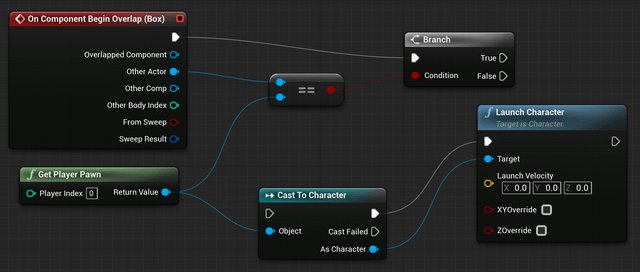The Importance of Blueprints in Unreal Engine

Blueprints are a visual scripting system within Unreal Engine that allows developers to create gameplay elements without writing code. This system provides an intuitive, node-based interface for developing game mechanics, interactions, and more. Here are several key reasons why Blueprints are important on the Unreal Engine platform:
1. Accessibility and Ease of Use Blueprints are designed to be user-friendly, allowing developers, including those with little to no programming experience, to create complex game logic. This democratizes game development, enabling artists, designers, and other non-programmers to contribute directly to the development process.
2. Rapid Prototyping The visual nature of Blueprints facilitates rapid prototyping. Developers can quickly test and iterate on gameplay ideas without the need for extensive coding. This speeds up the development cycle, allowing for more experimentation and innovation.
3. Visual Debugging Blueprints provide a visual representation of game logic, making it easier to understand and debug. The node-based system allows developers to see the flow of execution, making it simpler to identify and fix issues compared to traditional code debugging.
4. Integration with Code While Blueprints are powerful on their own, they can also be seamlessly integrated with C++ code. This allows for a hybrid approach where performance-critical or complex systems can be coded, while other gameplay elements can be handled with Blueprints. This flexibility ensures that developers can leverage the strengths of both approaches.
5. Iterative Design Process Blueprints support an iterative design process. Changes can be made on the fly, and their impact can be immediately tested. This real-time feedback loop is crucial for fine-tuning gameplay mechanics and achieving the desired player experience.
6. Collaboration and Communication Blueprints serve as a common language between different team members. Designers, artists, and programmers can more easily communicate ideas and collaborate on projects. The visual nature of Blueprints makes it easier for everyone to understand and contribute to the game’s development.
7. Community and Learning Resources Unreal Engine’s community provides extensive resources and support for learning Blueprints. Tutorials, forums, and documentation are readily available, helping new users to quickly get up to speed. This robust support network makes Blueprints an attractive option for beginners and experienced developers alike.
8. Consistency and Maintenance Blueprints help maintain consistency across the project by providing a standardized way of implementing game logic. They make it easier to manage and maintain the project, especially as it grows in complexity. Visual scripts are often more readable than code, aiding in long-term project maintenance.
9. Performance Considerations For many gameplay elements, Blueprints offer sufficient performance. Unreal Engine is optimized to handle Blueprint scripts efficiently, and in many cases, the difference in performance compared to native code is negligible. For performance-critical tasks, developers have the option to switch to C++ where necessary.
10. Blueprintable Components Blueprints allow the creation of reusable components that can be easily shared and used across different parts of the project. This modular approach enhances productivity and ensures that common functionality is implemented consistently.
Conclusion
Blueprints are an essential feature of Unreal Engine, offering a powerful, flexible, and accessible way to develop games. By enabling rapid prototyping, facilitating collaboration, and providing a robust debugging environment, Blueprints empower developers to create high-quality games efficiently. Whether used alone or in combination with C++ code, Blueprints are a vital tool in the Unreal Engine ecosystem, making game development more approachable and productive for everyone involved.









